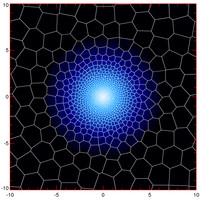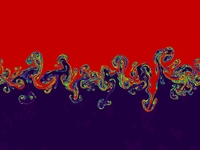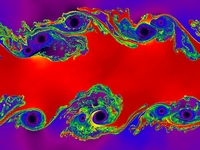Videos
| Kelvin-Helmholtz instability for one excited mode download movie (mp4, 42 MB, 768x768 pixel) |
   |
| Sedov-Taylor point explosion download movie (mp4, 151 MB, 768x768 pixel) |
   |
| Mesh-motion
in the Gresho vortex problem download movie (mp4, 45 MB, 768x768 pixel) |
   |
| Differentially rotating gaseous disk with exponential surface mass density profile download movie (mp4, 82 MB, 768x768 pixel) |
   |
| Rayleigh-Taylor instability seeded by random noise download movie (mp4, 76 MB, 1024x768 pixel) |
   |
| Kelvin-Helmholtz instability seeded by random noise download movie (mp4, 256 MB, 768x768 pixel) |
   |